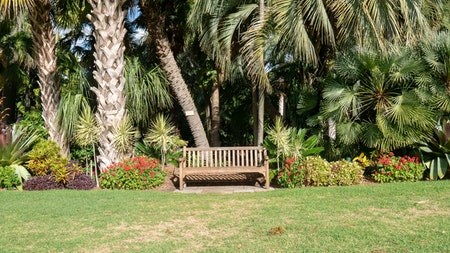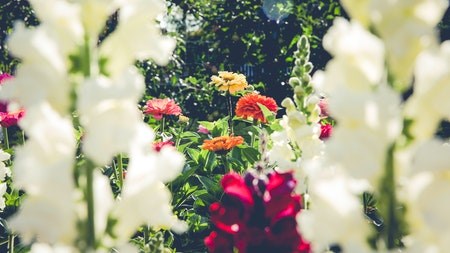For gardeners, every month of the year has its own tasks. May is the ideal time to plant roses and spring-flowering bulbs as well as winter-flowering seedlings. It’s also an excellent time to plant large shrubs and trees, allowing them to settle in during winter and prepare for a spring growth spurt.
Before planting, draw a rough plan of your garden and mark the position of plants that will die back in winter, like hostas, echinacea, alstroemeria and eucomis and other bulbs. This will help prevent overplanting and damage to existing bulbs.
Lifestyle offers the following guidelines for ensuring your garden looks good throughout the colder months of the year and has a head start in the spring and summer seasons.
Planting
It would be best to plant Lily bulbs as soon as they are available in nurseries.
Continue planting spring-flowering bulbs. Water them deeply and never allow them to dry out completely. Feed fortnightly with organic 3:1:5 or bulb food. Continue feeding fading bulbs to give them a boost for next season.
Continue planting winter-flowering seedlings like sweet peas, pansies, poppies, primulas, primroses, calendula, stocks, cineraria and violas. Feed fortnightly with fertiliser or seedling food. Be sure to mulch seedlings well. Crushed eggshells make an excellent mulch and could deter snails and birds that might be tempted to eat the seeds and seedlings.
The month of May is perfect for planting roses. When spring arrives, they will be settled, and you will be rewarded with strong growth and beautiful blooms.
Plant and transplant trees, shrubs, hedging plants and vines this month.
Aloes will add colour to your winter garden and attract sunbirds and sugarbirds. They are waterwise and very easy to maintain, and are ideal for beds and rockeries as well as containers.
Pruning
On old Liliums, trim the flower stalks to ground level.
Deadhead winter-flowering annuals to encourage further flowers.
Prune rose bushes of dead roses and spray fortnightly with a fungicide to combat black spots.
Vegetable garden
May is an excellent time to divide, lift and replant perennial herbs like lemongrass and chives and vegetables like artichokes.
Remove the last of the spent summer vegetables and plant Swiss chard, leeks, broccoli, Brussels sprouts, cabbage, cauliflower, kale, peas, turnips, winter lettuce and oriental greens.
If necessary, thin out seedlings of seeds that were sown in the ground. Feed all seedlings with seedling food or a water-soluble fertiliser. Mulch well to keep their roots warm in winter.
Prepare beds in full sun for asparagus corms, which will arrive in nurseries later in May.
Plant strawberries and be sure to mulch them well.
Feed vegetables with an organic 8:1:5 or 6:3:4 fertiliser.
Cabbages are prone to aphids, so plants should be sprayed with an organic aphicide or interplant with calendula, pennyroyal or chives. Sage is known to deter white fly.
Look for signs of cutworm around young vegetable seedlings. Before putting down bait, try non-toxic remedies like plucking out and crushing the larvae or plunging them into soapy water. When you remove and destroy plant waste, you will also remove and destroy any leftover cutworm eggs.
Indoors
Create more colour indoors with indoor flowering plants like Chrysanthemum, Cyclamen, Phalaenopsis and Cymbidium orchids.
Hyacinth bulbs can also still be planted in pots on a bright window sill from where they will lend fragrance to a room.
Feed plants once a month with liquid plant food for indoor plants. Feed orchids in flower with specially formulated orchid food.
General
Change the irrigation system’s settings to suit your area's autumn temperatures and rainfall.
Water your garden early in the day and mulch generously around all plants to protect roots. To prevent disease, always leave some space around the stems of plants when mulching.
Spread a layer of acid compost around camellias and azaleas and keep them moist to prevent bud drop.
Feed all plants with an organic 3:1:5 fertiliser to strengthen cell walls and control evaporation.
May 19 is the average first date for heavy frosts in Gauteng and other inland provinces. Stock up on frost protection fleece or hessian in time to protect tender plants. Move frost-sensitive potted plants to a sheltered spot.
Mow lawns on a high setting and water if dry.
Collect the fallen autumn leaves, which can be added to the compost heap or used as a mulch. Alternatively, you can collect leaves in black plastic bags and leave them to decompose into leaf mould, which is an excellent plant food. Be sure to destroy any diseased leaves.
Feed the birds more regularly as their natural food sources start to run low. Suet will provide them with a source of fat and energy.
Plant wild dagga and aloes for nectar-feeding birds and wild grasses for seedeaters.
Keep birdbaths clean and topped up with water for birds and other small animals.
If well implemented, the guidelines provided above will see you have a great garden in May and beyond.
Writer : Sarah-Jane Meyer





